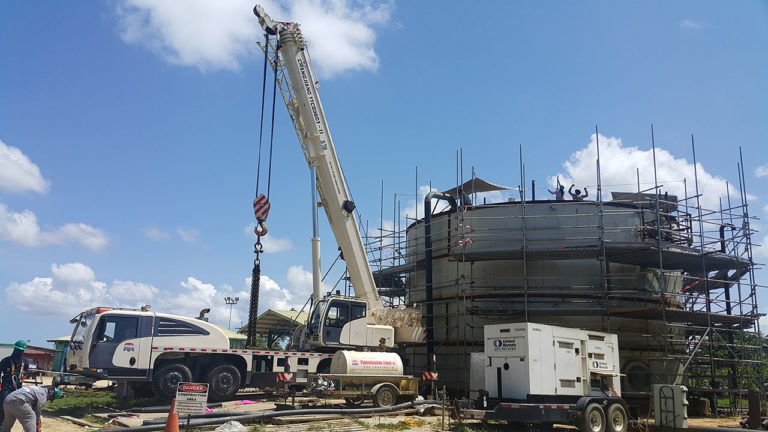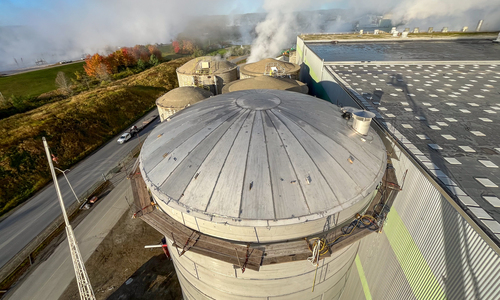How API 650 Welding Inspection Helps Eliminate Weak Welds and Ensures Reliability
Wiki Article
A Detailed Consider the Installation Process of Welding Examination Techniques
Welding evaluation is a crucial procedure that assures structural integrity and safety and security. The installment of assessment methods includes several methodical steps, each important to attaining reputable outcomes. From planning and tool selection to carrying out visual and non-destructive tests, each phase needs mindful interest. Understanding these procedures can greatly enhance quality control in welding tasks. What difficulties occur in implementing these methods, and just how can they be efficiently resolved?Recognizing the Importance of Welding Inspection
Welding inspection is an important element of making certain architectural honesty and safety and security in construction and production processes. This technique involves examining welded joints for flaws, making sure that they satisfy specific criteria and laws. By methodically determining weld top quality, assessors can identify problems such as splits, spaces, and incomplete combination, which can jeopardize the stamina and longevity of structures.The relevance of welding inspection extends past prompt safety and security issues; it aids stop costly failures and possible threats in the long-term. Reliable assessment strategies foster conformity with industry criteria, therefore enhancing the total integrity of welded elements. In addition, a durable examination procedure adds to keeping the online reputation of contractors and producers, as it assures clients of the top quality of their tasks. Eventually, understanding the value of welding inspection is vital for promoting safe building and construction techniques and making certain the durability of important framework and products.
Choosing the Right Tools for Examination
When choosing the appropriate devices for evaluation, it is necessary to contemplate the certain requirements of the welding process and the products involved. Different examination methods, such as aesthetic, ultrasonic, and radiographic screening, demand distinct tools customized to their unique needs. For aesthetic inspections, tools like amplifying glasses and calipers are vital for reviewing weld high quality. Ultrasonic screening calls for specific tools efficient in sending and receiving audio waves to identify internal defects. Radiographic testing, on the various other hand, makes use of X-ray or gamma-ray sources together with sensitive movie or electronic detectors to disclose inconsistencies.
In addition, individual safety tools (PPE) is vital to assure the safety of inspectors throughout evaluations. Picking the right devices not only improves the precision of evaluations however also contributes to the general stability and safety and security of the welding project. A thorough understanding of readily available devices and their applications is vital for efficient welding assessment.
Getting ready for the Inspection Refine
Before initiating the inspection procedure, it is important to establish a detailed strategy that details the range and objectives of the analysis. This plan should consist of certain criteria that specify what makes up appropriate high quality in the welding work being checked. Determining the relevant codes and requirements is important, as they will assist the evaluation criteria and methods.Furthermore, personnel associated with the evaluation has to be appropriately educated and accredited in welding examination methods to assure dependability and accuracy. A list can be advantageous in arranging the different facets of the assessment, ranging from devices preparedness to environmental problems that might influence the assessment.

Logistical considerations such as scheduling, offered sources, and communication between team members must be resolved. By preparing methodically, examiners can improve the efficiency of the analysis and make certain that all critical elements are appropriately thought about prior to waging the assessment itself.
Carrying Out Aesthetic Examinations

Carrying out aesthetic inspections is an essential action in the welding evaluation process, needing mindful preparation to guarantee reliable examination. Inspectors need to recognize with essential defect signs that can signal possible concerns in weld high quality. By focusing on these facets, one can enhance the total reliability of the evaluation outcomes.
Getting Ready For Visual Inspection
Aesthetic inspection works as a critical primary step in the welding assessment procedure, guaranteeing that any potential problems are recognized early (API 650 Welding Inspection). Proper preparation is essential for effective aesthetic examination. his explanation Inspectors must start by reviewing appropriate documentation, including welding procedures and requirements, to comprehend the job demands. They have to collect needed tools, such as magnifying glasses, flashlights, and suitable personal protective tools (PPE) A complete evaluation of the evaluation area is critical; inspectors ought to validate it is clean and cost-free of obstructions. Furthermore, it is necessary to develop excellent lighting conditions to enhance visibility of welds. By taking these preparatory actions, assessors can develop a setting for identifying discrepancies and assuring the integrity of the welded structuresKey Defect Indicators
A detailed understanding of key defect indicators is important during visual evaluations to guarantee the quality and safety of bonded joints. Examiners ought to focus on details signs such as splits, porosity, damages, and insufficient blend. Splits might look like sharp lines and can compromise architectural honesty. Porosity materializes as tiny openings that can deteriorate weld strength. Undercuts, which are grooves along the weld side, can result in stress and anxiety focus. Insufficient combination indicates that the weld steel did not appropriately bond with the base product, leading to a weak joint. By methodically determining these problems, assessors can determine compliance with sector requirements and enhance the total dependability of welded frameworks, eventually adding to more secure operational problems.Carrying Out Non-Destructive Evaluating Strategies

Many non-destructive testing (NDT) strategies are important to guaranteeing the stability of welded structures without endangering their functionality. These techniques allow examiners to review weld high quality and identify defects without causing damages to the products being tested. Typical NDT strategies include ultrasonic screening, radiographic screening, magnetic bit screening, and color penetrant testing. Each approach serves a certain objective, dealing with different kinds of imperfections such as cracks, porosity, or incomplete combination.
Applying NDT techniques calls for a systematic method, starting with picking the appropriate technique based upon the materials and the nature of the weld. Training workers in these methods is crucial for precise outcomes. Additionally, establishing clear treatments and criteria warranties uniformity throughout the evaluation procedure. By incorporating NDT right into the welding examination next workflow, companies can improve the dependability of their items while decreasing potential risks related to architectural failings. This aggressive strategy eventually adds to preserving security and high quality requirements in welded buildings.
Assessing and recording Examination Outcomes
Reliable documents and evaluation of assessment results are vital elements of the welding examination procedure. Precise documents of examination findings work as a reference for high quality assurance and conformity with industry standards. API 650 Welding Inspection. Assessors must use electronic platforms or organized kinds to log information such as the kind of weld, examination techniques employed, and any kind of disparities recognized throughout the examinationAs soon as data is collected, comprehensive analysis is vital. This includes comparing outcomes versus established criteria to recognize trends or repeating problems. Analytical tools might be employed to measure problems and evaluate their influence on overall weld quality.
Additionally, effective communication of searchings for to appropriate stakeholders is important. Recaps and reports need to be succinct and clear, highlighting vital insights and recommendations for restorative actions. By methodically analyzing and documenting examination outcomes, companies can cultivate continual enhancement in welding techniques and improve product honesty.
Often Asked Concerns
What Certifications Are Required to End Up Being a Welding Examiner?
To come to be a welding assessor, one normally requires appropriate accreditations such as AWS CWI, together with experience in welding techniques, understanding of welding codes, and effectiveness in examination techniques to assure quality and safety standards.Just How Usually Should Welding Inspections Be Performed?
Welding evaluations you can try here must be carried out regularly, normally after each weld is completed, and regularly throughout tasks. Variables such as project intricacy, industry requirements, and regulative demands can influence the regularity of these assessments.What Is the Cost of Welding Assessment Providers?
The price of welding examination solutions differs significantly based on elements such as task complexity, dimension, and area. Usually, rates vary from $100 to $150 per hour, with extra costs for specialized testing and certifications.Exist Certifications for Welding Inspectors?
Yes, there are various qualifications for welding assessors, including those supplied by the American Welding Society (AWS) and the International Institute of Welding (IIW) These certifications guarantee inspectors possess the required abilities and expertise for efficient assessments.
How Do I Choose an Evaluation Service copyright?
To select an examination company, one ought to review certifications, experience, industry online reputation, and client testimonials. In addition, contrasting solution offerings and prices can help assure the selected service provider fulfills specific task requires successfully.Additionally, workers included in the evaluation needs to be appropriately educated and certified in welding examination strategies to guarantee reliability and precision. Conducting visual inspections is an essential step in the welding assessment process, calling for careful preparation to ensure efficient assessment. Aesthetic inspection serves as a vital initial step in the welding examination procedure, ensuring that any kind of possible issues are identified early. Effective documentation and analysis of evaluation results are essential parts of the welding inspection process. Welding evaluations should be carried out consistently, generally after each weld is finished, and periodically during tasks.
Report this wiki page